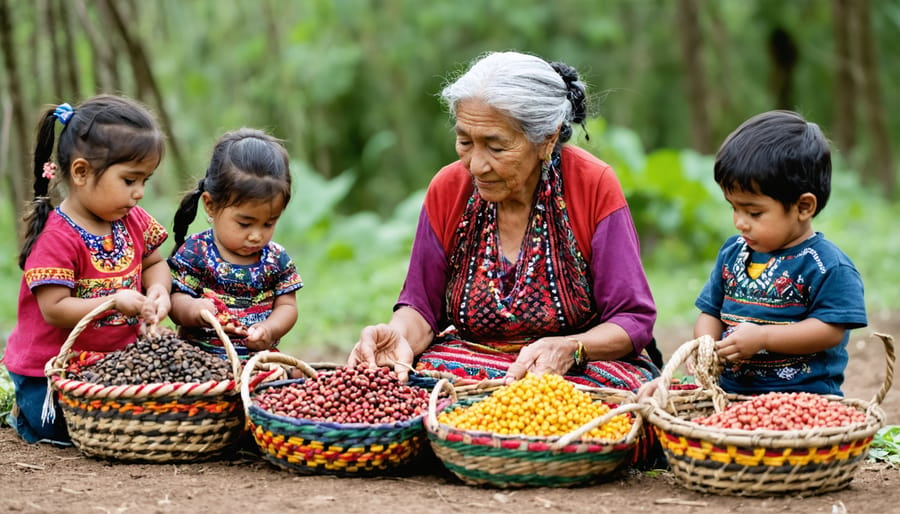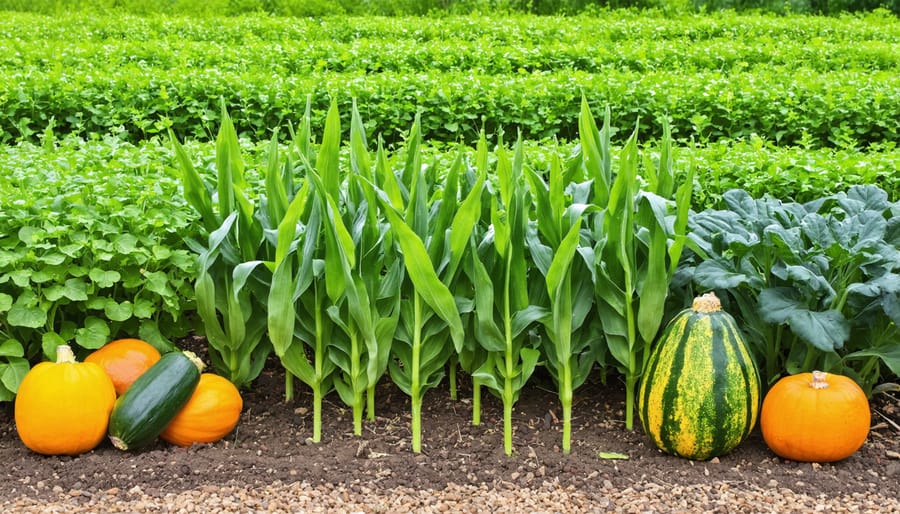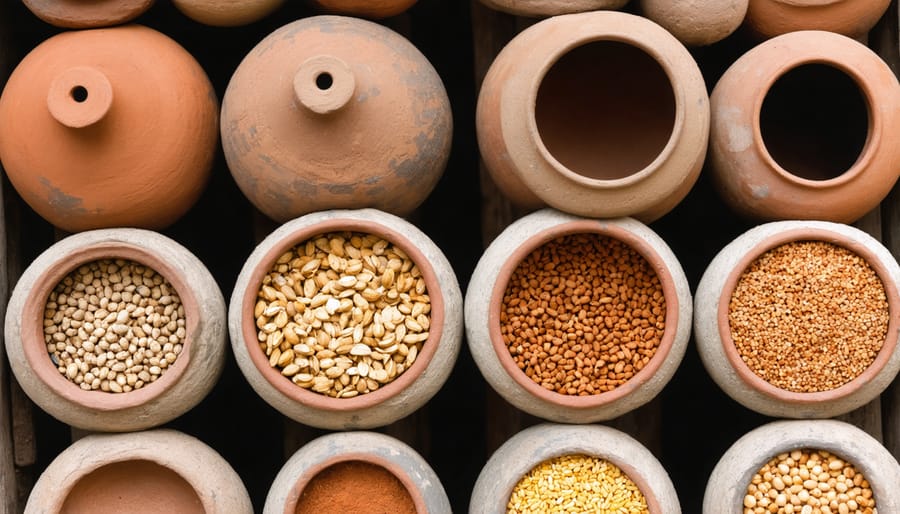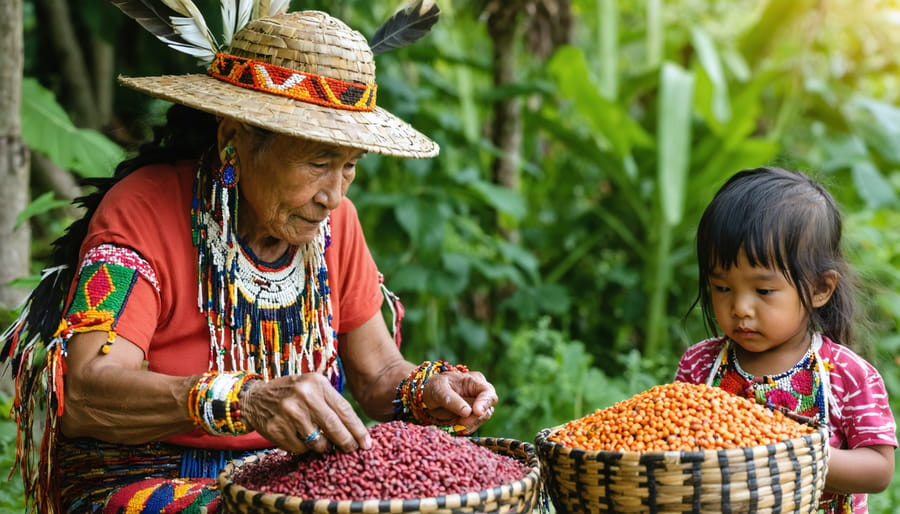For countless generations, Indigenous peoples worldwide have cultivated deep relationships with their local ecosystems, developing sophisticated methods of land stewardship that modern science is only beginning to fully appreciate. This ancient wisdom – known as Traditional Ecological Knowledge (TEK) – offers crucial insights for addressing today’s environmental challenges, from climate change adaptation to sustainable food production.
Unlike conventional Western approaches that often view nature as a resource to be managed, Indigenous knowledge systems recognize the intricate web of relationships between all living beings. This holistic understanding, passed down through oral traditions and hands-on practice, encompasses everything from weather prediction and wildlife patterns to soil health and seed preservation.
What makes TEK particularly valuable today is its emphasis on long-term sustainability and resilience. These time-tested practices, refined over centuries of careful observation and adaptation, offer practical solutions for modern gardeners, farmers, and conservationists seeking to work in harmony with natural systems. From Three Sisters companion planting to traditional fire management techniques, Indigenous ecological knowledge provides a blueprint for regenerative agriculture and ecosystem restoration.
As we face unprecedented environmental challenges, integrating this ancestral wisdom with contemporary scientific understanding becomes not just valuable, but essential for creating a more sustainable future.
The Living Library: Indigenous Seed Knowledge Through Generations
Sacred Seeds: More Than Just Food
In many indigenous cultures, seeds represent far more than just agricultural resources – they embody sacred connections between people, land, and ancestral wisdom. These precious kernels of life carry stories, traditions, and spiritual significance passed down through countless generations. Traditional seed keepers often perform ceremonies and offer prayers when planting and harvesting, recognizing seeds as living beings deserving of respect and gratitude.
The practice of preserving heirloom varieties isn’t just about maintaining genetic diversity – it’s about keeping cultural memories alive. Many indigenous communities view seeds as relatives, teachers, and gifts from the Creator that require careful stewardship. Each variety often has its own origin story, traditional uses, and specific growing instructions woven into community knowledge.
This deep spiritual connection influences how seeds are selected, stored, and shared. Many indigenous gardeners speak or sing to their plants, understanding that this relationship goes beyond mere cultivation. Some seeds are considered sacred medicines, used in healing practices and ceremonies that strengthen both individual and community wellbeing.

Time-Tested Growing Methods
Indigenous communities have developed sophisticated growing methods over thousands of years, carefully adapting their techniques to local climates and soil conditions. The Three Sisters method, pioneered by Native American tribes, combines corn, beans, and squash in a mutually beneficial growing system. The corn provides natural poles for beans to climb, while beans fix nitrogen in the soil, and squash leaves create ground cover that retains moisture and prevents weeds.
Many indigenous farmers practice companion planting, strategically placing certain plants together to enhance growth and naturally deter pests. They often integrate perennial food forests, which mimic natural ecosystems by growing multiple layers of edible plants – from root crops to fruit trees – in the same space.
Traditional timing methods, based on natural indicators like bird migrations or flowering patterns, help determine optimal planting seasons. These bio-indicators have proven remarkably accurate, even as climate patterns shift. Indigenous farmers also practice seed saving and selective breeding, preserving crop varieties that are uniquely adapted to local conditions and ensuring food security for future generations.
Smart Seed Selection: Learning from Traditional Methods

Companion Planting Wisdom
Indigenous communities have long understood that certain plants naturally complement each other when grown together. This wisdom, passed down through generations, creates resilient garden ecosystems that support healthy plant growth while naturally deterring pests.
One of the most famous examples is the Three Sisters planting method, where corn, beans, and squash work in harmony. The tall corn stalks provide natural support for climbing beans, while the beans fix nitrogen in the soil to nourish the corn. The large squash leaves spread along the ground, creating living mulch that retains moisture and suppresses weeds.
Traditional knowledge also pairs aromatic herbs with vegetables for pest management. Marigolds planted near tomatoes help repel harmful nematodes, while sage companions well with cabbage to deter cabbage moths. Indigenous gardeners often plant sweetgrass near other crops, as its pleasant scent confuses insects searching for their target plants.
Desert-dwelling communities traditionally plant brittle bush or creosote near sensitive crops, as these plants naturally protect their neighbors from harsh sun and wind. In woodland gardens, elderberry is often grown alongside other plants because it attracts beneficial insects and provides shade for shade-loving species.
These time-tested combinations demonstrate how working with nature’s relationships creates stronger, more productive gardens while reducing the need for external inputs.
Natural Seed Storage Solutions
Indigenous peoples have developed remarkable seed storage solutions that have stood the test of time, protecting vital food sources for generations. These time-honored techniques focus on working with natural materials and local environmental conditions to preserve seeds effectively.
Clay pots and earthenware vessels remain among the most successful traditional storage methods. These containers naturally regulate moisture and temperature while allowing seeds to breathe, creating ideal conditions for long-term storage. Many communities enhance these vessels by mixing wood ash or specific dried herbs with their seeds to naturally repel insects and prevent mold growth.
Natural fiber bags made from materials like hemp, jute, or locally harvested plant fibers offer another time-tested solution. These breathable containers are often hung from rafters in well-ventilated areas, allowing air circulation while protecting seeds from moisture and pests. Some indigenous groups wrap their seeds in large leaves, such as banana or corn husks, creating natural packets that shield seeds from light and humidity.
Underground storage chambers, known as seed pits or earth cellars, demonstrate ingenious use of natural temperature regulation. These structures maintain consistent cool temperatures and humidity levels, often incorporating layers of dry grass, ash, or clay as natural preservatives.
Today’s gardeners can adapt these wisdom-filled practices by using similar natural materials and focusing on proper air circulation, moisture control, and temperature stability in their seed storage methods.

Climate-Smart Growing: Indigenous Weather Knowledge
Indigenous communities have long relied on nature’s signals to make informed decisions about planting and harvesting cycles. By carefully observing patterns in plant and animal behavior, weather phenomena, and celestial movements, these communities developed sophisticated systems for predicting weather patterns and optimal growing conditions.
For example, many Indigenous farmers watch for the emergence of certain wildflowers or the arrival of specific migratory birds to signal the right time for planting. The Pueblo peoples of the American Southwest traditionally observe ant behavior – when ants build up their mounds, it often indicates approaching rain. Similarly, in Australia, Aboriginal communities recognize the flowering of certain wattle species as an indicator that specific fish species are abundant and ready for harvest.
Cloud formations play a crucial role in this knowledge system. Many Indigenous communities can predict incoming weather patterns by observing subtle changes in cloud shapes and movements. This understanding helps them protect their crops and adjust planting schedules accordingly, leading to the development of climate-resilient varieties that have adapted to local conditions over generations.
The moon phases also guide planting decisions in many Indigenous communities. Some groups plant root crops during the waning moon, believing the downward-pulling energy helps develop stronger roots. Alternatively, above-ground crops are often planted during the waxing moon phase when the rising energy is thought to support upward growth.
These traditional weather-reading practices offer valuable insights for modern gardeners looking to develop a deeper connection with their local environment. By learning to recognize natural indicators in our own gardens – from frost-predicting cricket chirps to rain-forecasting pine cone movements – we can make more informed growing decisions while reducing reliance on technology-dependent weather forecasting.
Saving Seeds the Indigenous Way
Indigenous seed-saving practices represent some of the most sophisticated and time-tested methods of preserving plant diversity. While modern seed preservation efforts rely heavily on technology, traditional techniques focus on working in harmony with natural cycles and local environments.
One fundamental principle of indigenous seed-saving is the practice of selecting seeds from the healthiest, most resilient plants that have adapted well to local conditions. Traditional knowledge teaches us to watch for specific characteristics: plants that withstand drought, resist local pests, or produce abundantly despite challenging conditions.
The timing of seed collection is crucial in indigenous practices. Seeds are typically gathered during the dry season or after the morning dew has evaporated to prevent moisture-related issues. Many indigenous communities use the moon phases as a guide, collecting seeds during the waning moon when moisture content in plants is naturally lower.
Storage methods vary among different indigenous cultures, but common elements include:
• Using natural containers made from gourds, clay pots, or woven baskets
• Adding aromatic herbs or ash to protect seeds from insects
• Storing seeds in cool, dark places above ground level
• Wrapping precious seeds in birch bark or other natural materials that regulate moisture
A unique aspect of indigenous seed-saving is the spiritual connection to the process. Many communities perform ceremonies or say prayers when collecting and storing seeds, recognizing them as living beings rather than mere objects. This deep respect translates into careful handling and storage practices that have proven effective over generations.
Another vital practice is the tradition of seed sharing within and between communities. This not only helps maintain genetic diversity but also strengthens community bonds and ensures food security. Many indigenous groups organize seed exchanges during seasonal gatherings, creating opportunities to share knowledge alongside seeds.
For home gardeners looking to apply these traditional methods, start by:
• Observing which plants thrive naturally in your area
• Saving seeds from multiple healthy plants to maintain diversity
• Using natural materials for storage when possible
• Creating your own seed-sharing network within your community
These time-honored practices offer valuable lessons for sustainable agriculture and help preserve both biodiversity and cultural heritage for future generations.
As we look to build a more sustainable and resilient food system, the wisdom held within indigenous traditional ecological knowledge becomes increasingly vital. These time-tested practices, developed over countless generations, offer proven solutions to many of our modern agricultural challenges. From drought-resistant farming techniques to biodiversity preservation, indigenous communities have long demonstrated how to work in harmony with natural ecosystems rather than against them.
By preserving and implementing this knowledge, we not only honor the cultural heritage of indigenous peoples but also gain valuable insights into sustainable food production. Success stories from farms incorporating traditional methods alongside modern practices show increased yields, improved soil health, and greater resistance to climate challenges. These results highlight how indigenous agricultural wisdom can help address food security concerns while protecting our environment for future generations.
The responsibility falls on all of us to ensure this precious knowledge isn’t lost. Supporting indigenous communities, documenting traditional practices, and creating partnerships between conventional farmers and indigenous knowledge holders are crucial steps forward. For home gardeners and small-scale farmers, incorporating even simple traditional techniques can make a significant difference in creating more sustainable growing spaces.
Remember, every garden plot or farm that embraces these time-honored practices helps keep this valuable knowledge alive and contributes to a more sustainable agricultural future.

